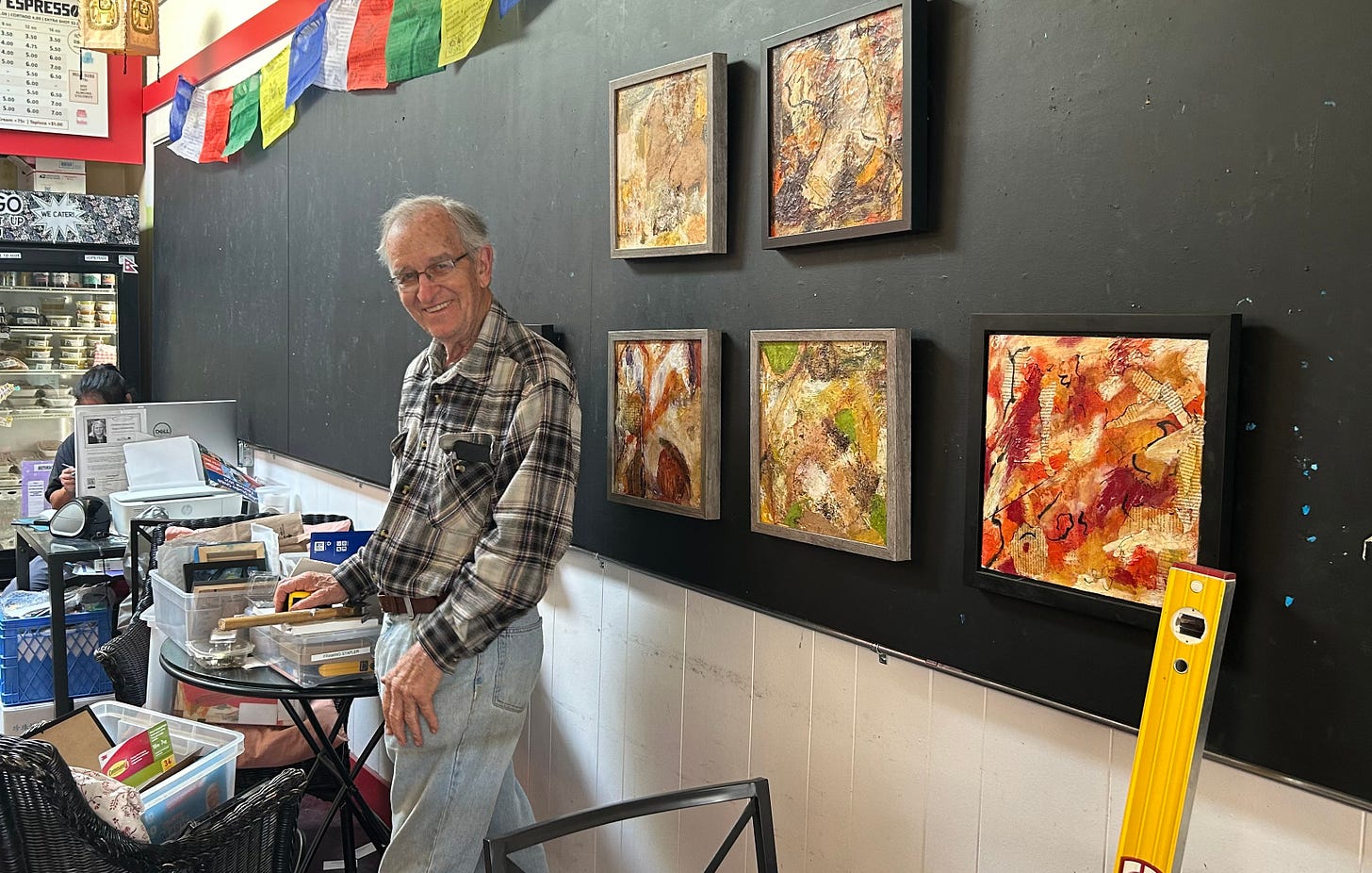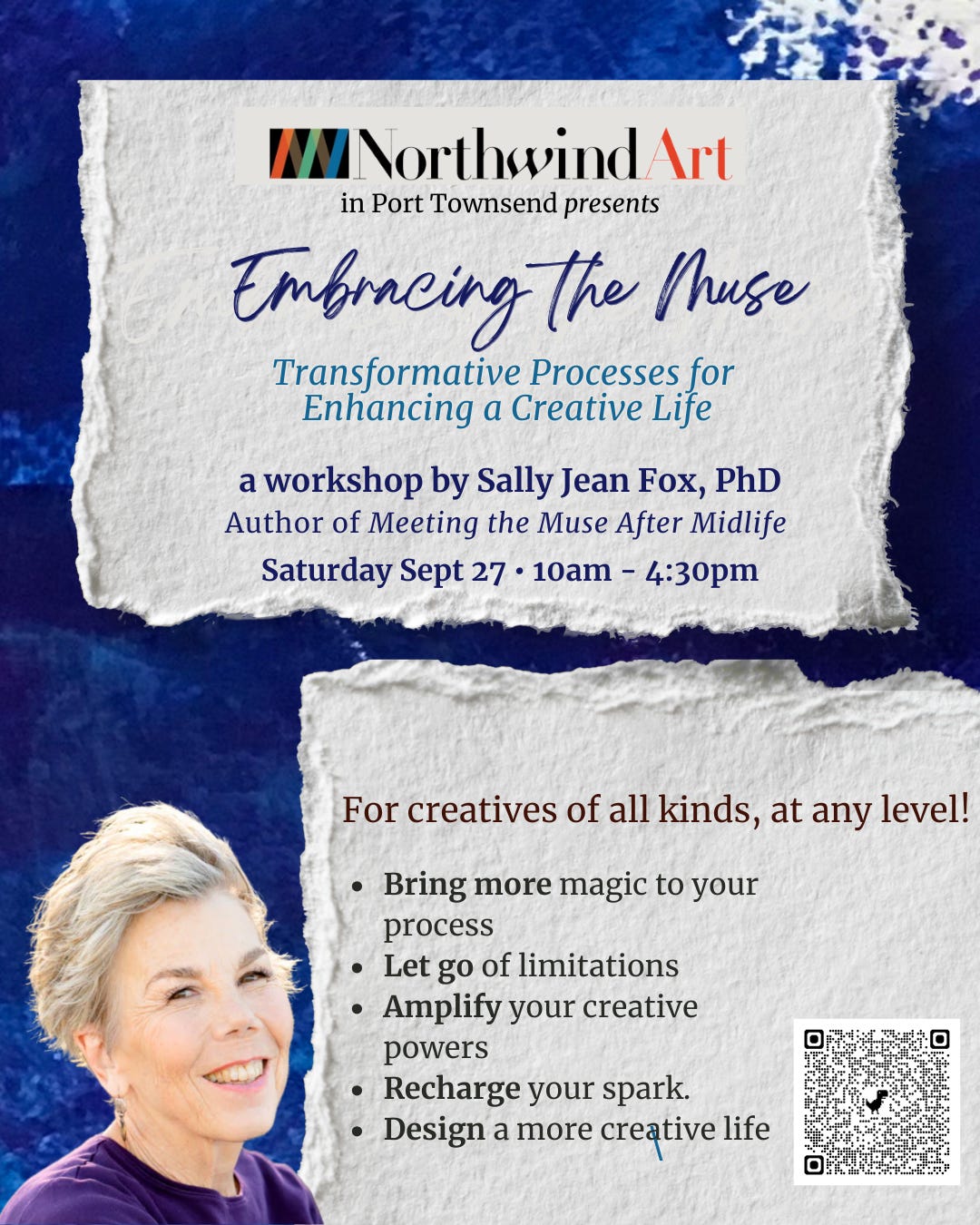Sweeping a Path from Scarcity to Sufficiency
How a little gratitude, some chrysanthemums, and housecleaning shifted fear into ease.
I don’t know why I carry fears around money, since for the most part, I’ve lived a comfortable life. But reality and feelings are not the same. I live in a culture that bombards me daily with the message: “You need more. Buy more.”
Notable billionaires—people with unimaginable wealth—still seem to believe they need more. They’re marching to the tune of Gordon Gekko in the film Wall Street, when he famously declared:
“The point is, ladies and gentlemen, that greed, for lack of a better word, is good. Greed is right. Greed works.”
The irony is that, in an affluent culture driven by consumption, it’s hard ever to feel satisfied.
But abundance isn’t about how much you have—it’s about how you feel about what you have.
(I’m not writing here about those who are truly suffering lack; that is all too real for many.)
The Roots of Fear
Some of my fear clearly comes from the culture. But I suspect it also traces back to deeper, invisible wounds—threads of intergenerational trauma. Do I carry my grandparents’ memories of living through the Depression? Or my great-grandmother’s struggles as a single mother working in Florida cigar factories? Perhaps the roots stretch even further back.
This isn’t anything I’m likely to figure out. But it does give me compassion for the little girl inside and her seemingly irrational fears.
The Need for an Attitude Shift
Whatever the reasons, fear isn’t fun—especially when heading into something like a small real estate negotiation. The scarcity message blared in my head: Will we get enough from this deal?
Yes, it’s important to be informed when negotiating. But fear is not the friend you want at the table.
Time for a reset.
Learning from the Wise
I turned to a few writers who have thought deeply about money, sufficiency, and abundance:
Vicki Robin, my friend and co-author of the best-selling Your Money or Your Life, has long argued that our consumerist culture robs us of what we want most: the time and freedom to live meaningfully. She reminds us that what we’re truly longing for isn’t more stuff but a life that matters.
Lynne Twist, in The Soul of Money, offers a powerful alternative to the scarcity mindset: sufficiency. She describes the peace that comes when we know we have enough and we are enough. In one interview she said:
“When you let go of trying to get more of what you don’t really need, it frees up oceans of energy to turn and pay attention to what you already have. When you pay attention to what you already have, when you nourish it, when you’re grateful for it, and when you share it, it expands. A shorter way of saying that is: what you appreciate appreciates.”Robin Wall Kimmerer, in Braiding Sweetgrass and The Serviceberry, turns to nature for lessons on abundance. She finds wealth in reciprocity—the giving and receiving that sustains life.
From Braiding Sweetgrass:
“To live in a world of abundance is to take only what you need, to use it well, and to share what you’ve been given.”
From The Serviceberry:
“In the way of the gift, one’s ability to give is both the proof of abundance and the source of more abundance.”
Moving into Action
I could have spent all day reading their wisdom, but I needed to prepare for the negotiation. So I took a radical step: I cleaned my house.
Normally, cleaning feels like an endless chore—especially with the dirt-tracking, fur-dropping, tail-wagging joy boys who share our home. But this time, I wanted to clear more than dust. I wanted to shift the energy from fear into abundance.
As I dusted and swept, I took time to appreciate what surrounded me: the grandfather clock standing regal though silent, a handmade tea bowl, the garden view, the simple blessing of hot water. I even marveled at the beauty of an ice cube from our new freezer.
Then my thoughts turned to the people in my life—family, friends, community—and the natural world that sustains me. Gratitude began filling the room.
For an added boost (woo-woo alert), I asked unseen helpers to sweep away fear and set the stage for fairness and ease. I placed a tiny vase of chrysanthemums on the table. And with that, I felt whole, ready.
The negotiations? They unfolded in the spirit I’d hoped for: collaboration, goodwill, and fairness.
A Few Steps Toward Abundance
Though I’m no expert, here are some practices that help me lean into abundance and counter our culture’s scarcity messages:
Be kind to the little ones inside who are scared about money. They deserve compassion, but they don’t need to run the show.
Have what you have. Really notice and appreciate the usefulness and beauty of daily objects as well as the most precious ones. Give thanks for all the hands that brought them to you.
Appreciate the intangible gifts—friendships, laughter, the feel of wind on your face.
Savor experiences. For me, time in my studio making art always makes me feel rich.
Give. Generosity is one of the quickest ways to amplify abundance.
Keep goods in circulation. Nature doesn’t hoard. If you have more than you need, let it go. Your gift may become someone else’s abundance.
Consecrate your dwelling. With music, fragrance, poems, or prayers, honor your home as the sanctuary it is. Not everyone has the privilege of safe shelter. Be grateful.
I can’t pretend my fears are gone. We live in a turbulent world, and uncertainty is real. But when I focus on sufficiency, gratitude, and abundance, I don’t have to cling so tightly.
And—bonus—I’m also a better negotiator.
My lovely husband has been working SO hard to hang my art for a little exhibit at Anu Rana’s tea shop in September. Painting is FUN! Hanging is work
SEPTEMBER IN PORT TOWNSEND, WASHINGTON
Please join me on September 27th at Northwind Art in Port Townsend if you’re in the area. We will play, improvise, create, and explore how we can all live more creative lives
.





